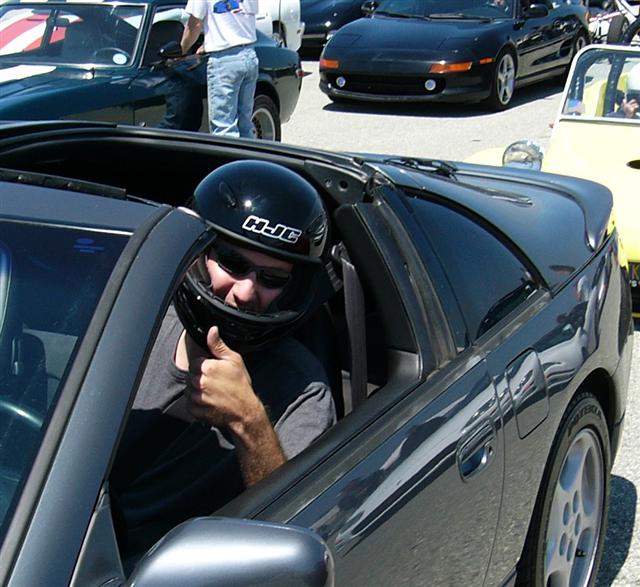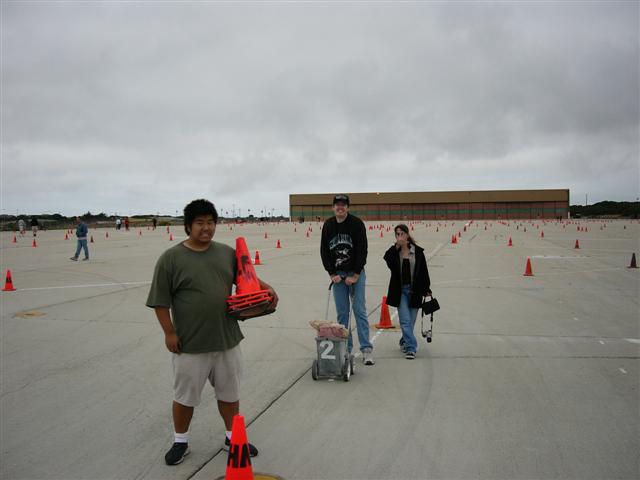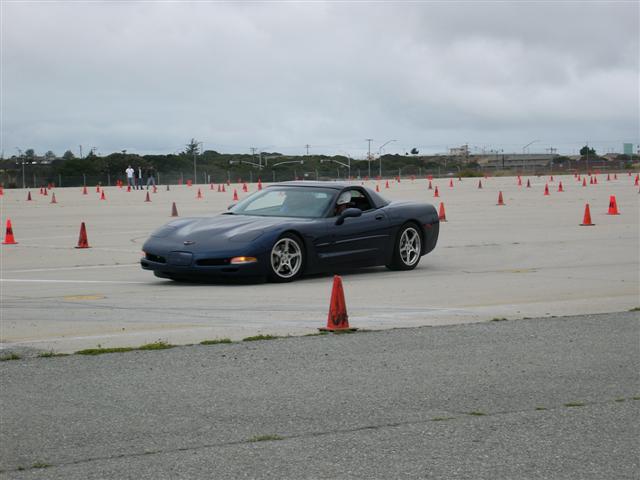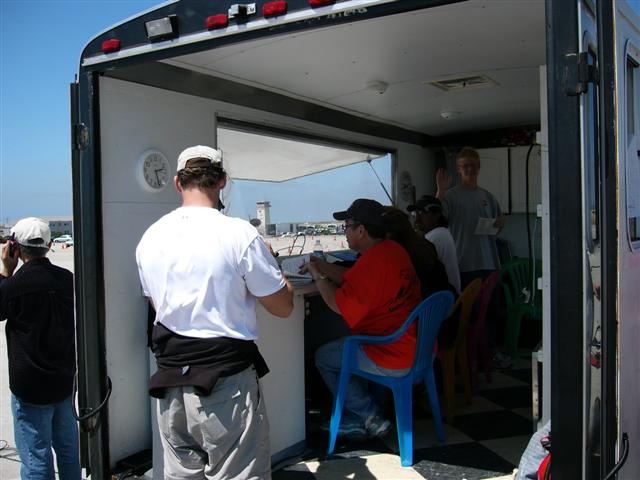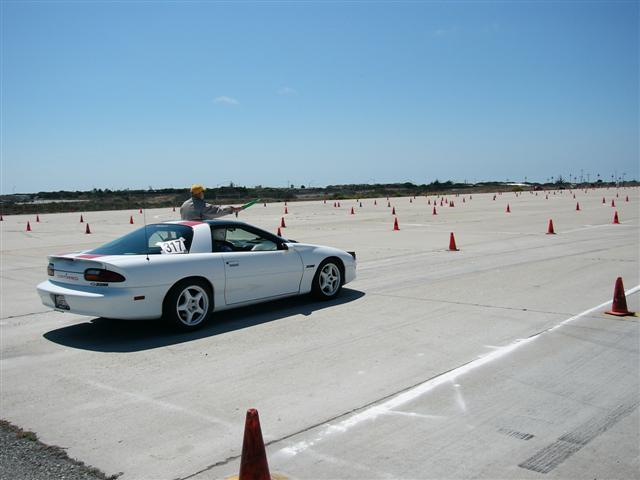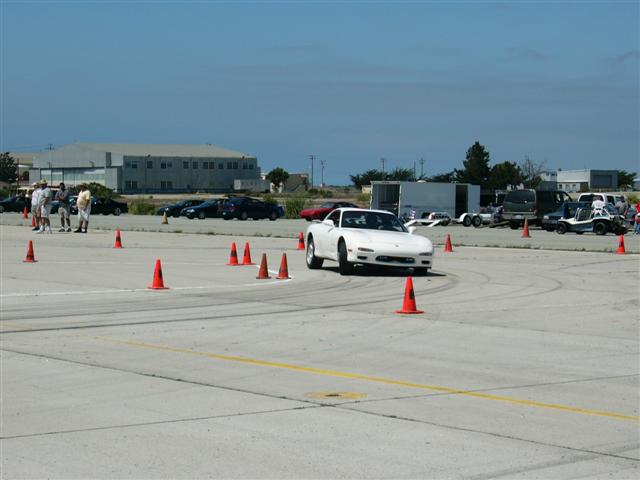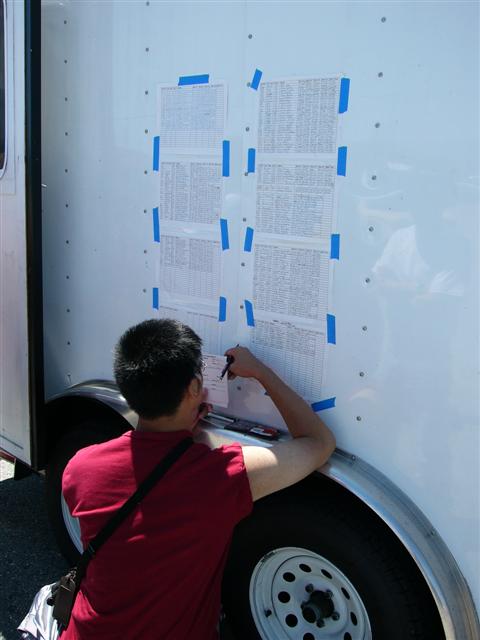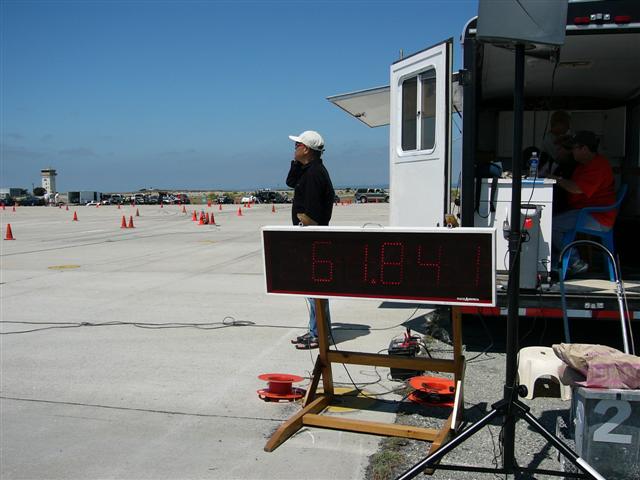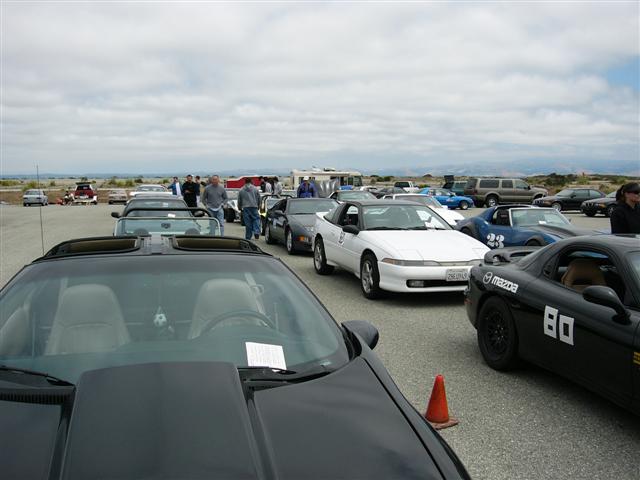NASCAR for the rest of us.
22 Jul 2003Where s the motorhome? I heard one of the organizers say. The late motorhome was only a motorhome on the outside. Inside it contained all the electronic instrumentation, audiovisual gear, and roughly one thousand pylons (red cones, for us laypeople) that would transform this airport tarmac into the local version of Daytona Speedway .
Ever hear of Autocross? While NASCAR has turned into a household name, Autocross remains largely obscure. But this little-known competition is actually the largest motor-sport in participants topping even Drag Racing. Thousands of Americans gather on their weekends, converting mall parking lots and airport tarmacs into coned race courses. They compete in everything from open-wheel racecars to family station wagons. Autocross is a safe and economical way to access the thrill of motor-sport competition.
Autocross is a timed event where a single driver and vehicle navigate a course marked out with chalk and pylons. The course contains straight-aways, slalom, S , 180-degree, and hairpin turns. Drivers compete against each other by trying to turn] the best time. Each driver has three runs to try to make the best time for their class. Drivers are divided into classes of similar vehicles to make the contest fair and competitive.
All that is required for autocross is a car, the $25 entry fee, and a helmet; and often you can borrow the helmet from the event organizers.
Autocrossing s heritage derives from the gymkhana and slalom competitions popular in Europe in the 1950 s and 1960 s. These competitions crossed the atlantic as the demand for European sports cars increased in America. The sport has evolved from it s early beginnings into the modern Autocross. Autocrossing s rise in popularity has caught the automakers attention. One automaker, Mazda has modeled it s Rev It Up national competition after the autocross format.
Autocrossing draws a wide range of people from all walks of life. Some are college students with souped up sport-compact cars who d otherwise be out street-racing fast-and-furious style; Others are retirees with their classic wheels who didn t manage to die young but still live fast ; Still others are white-collar workers and home-keepers who find autocrossing a welcome alternative to a day at the park.
At the registration table you pay your event entry fee, show a valid driver s license and sign the waiver. With little fanfare you are issued a wristband and welcomed to the world of racing.
One of the critical parts of the autocross takes place after the course has been coned and chalked. This is the walkthrough , where each autocrosser has the chance to walk the course. Since there are no practice runs in autocross competitors create their strategy at a leasurely 3MPH walking pace. Courtesy dictates that an experienced autocrosser walk the novices through the course. Where are you looking? You should be looking over there! pointing to a point behind my shoulder. The successful autocrossers are always thinking about the turn three turns ahead, not the one they are approaching. If you are thinking about the turn you are approaching you ve already passed it. In this sport things happen that fast!
Autocrossing also helps drivers develop skills they can apply to everyday driving. By competing they learn the limits of their vehicle and driving abilities in a safe environment. The result is that they are more confident and better prepared to handle unexpected situations they encounter on the public roads.
Screeeech! The green flag is waved I do my best to lauch off the starting line with as little wheel-spin as possible. The course itself takes under sixty seconds to navigate, but in this sixty seconds there are close to two dozen turns, several straightaways, and a slalom. My first run is noisy, I must have been quite a site as I screeched and skidded around the course. By the time I stop after the finish my heart is racing and the adrenaline has really kicked in.
I am handed my timeslip, I m about 5 seconds off the lead time of my class. It was quite dramatic. But any decent autocrosser will tell you noisy and dramatic is slow. The secret to autocross is to be smooth and in control.
I can t expect to conquer this sport my first time on the track. A good goal to set at the first event is to simply make each run better than the last. Which is what I did, shaving about s of a second off of each remaining run.
Almost as exciting as competing in the autocross is working the course. Part of what makes the autocross work is that the competitors are also the course workers who man the stations placed strategicly around the track. Stationed between turns with a radio and a red flag, it is these workers responsibility to reposition the pilons as they are thrown yards into the air by errant autocrossers who miss their turns. Several autocrossers are on the track at one time, spaced twenty seconds apart, giving the course workers small windows in which to replace pilons then return to safety before the next racer bears down on them. However, accidents in these events are unheard of as a professional manner is maintained by everyone. If any course worker sees an unsafe situation they can wave the red flag to bring the competition to a halt.
Autocrossing has novice classes, which allow newcomers to compete against other newcomers before graduating to the hardcore competition. The Autocross season starts in January and runs through the summer. After the sixteen events of the series the scores from each event are tallied and the top competitors from each class receive awards. There is a winter slush series run as well for those who can t wait till the start of the next season.
The Sports Car Club of America organizes autocross events across the United States. The San Francisco regional group runs events in many venues throughout the bay area including Oakland Coleseum and Candlestick Park. NASA/X also organizes events across the Bay Area over summers. For more information visit the SCCA SF Region at http://www.sfrscca.org/solo2/
